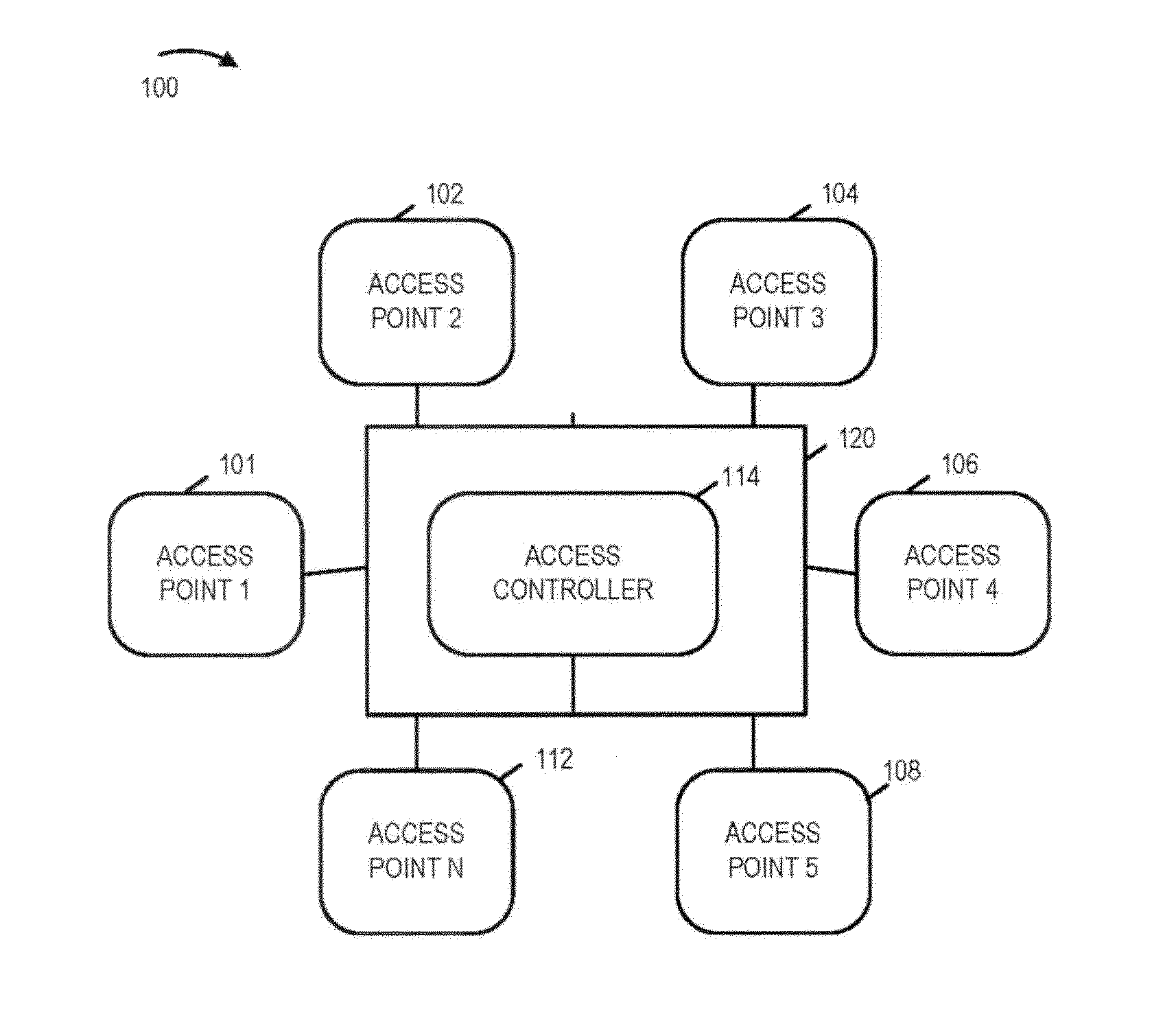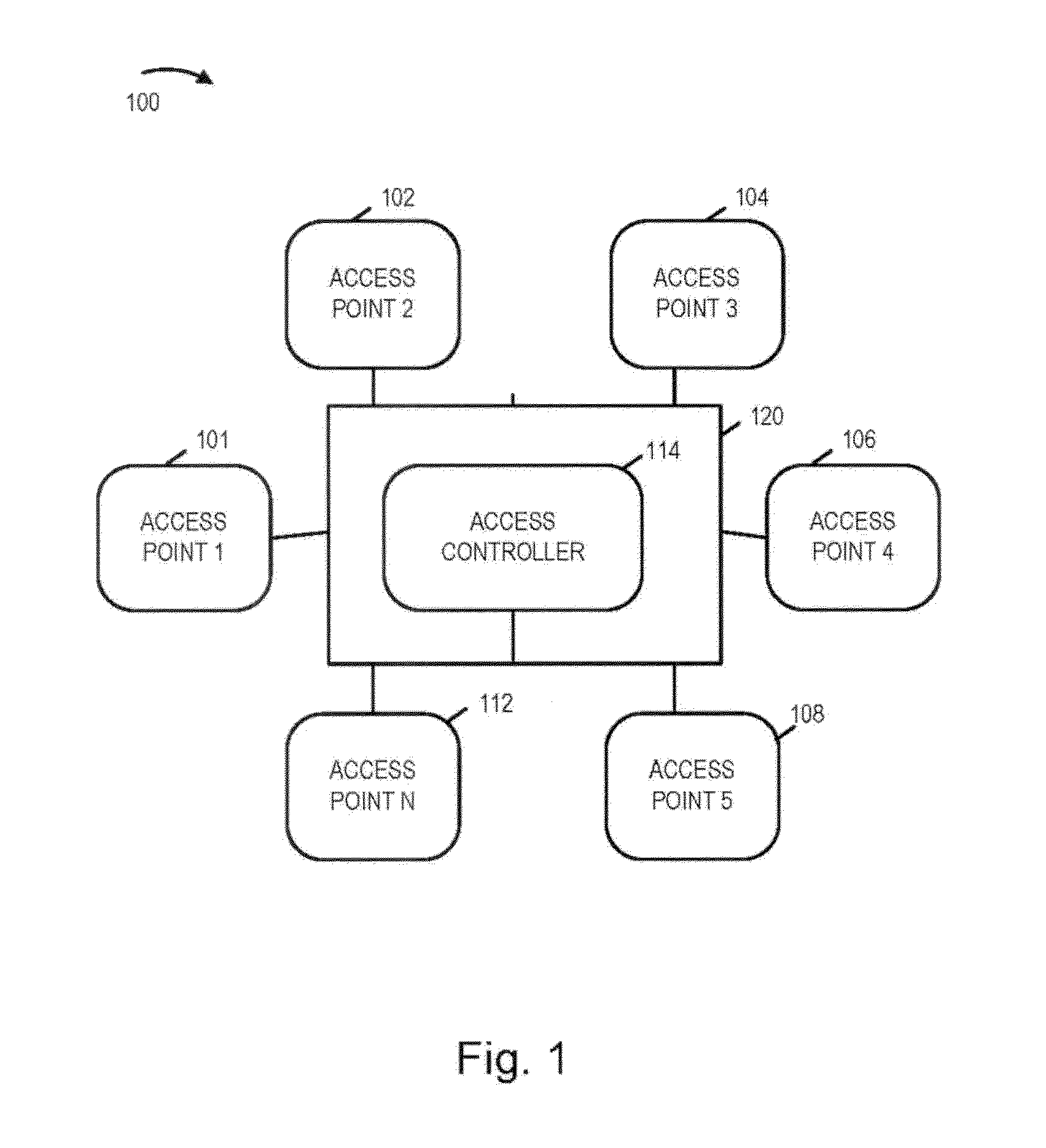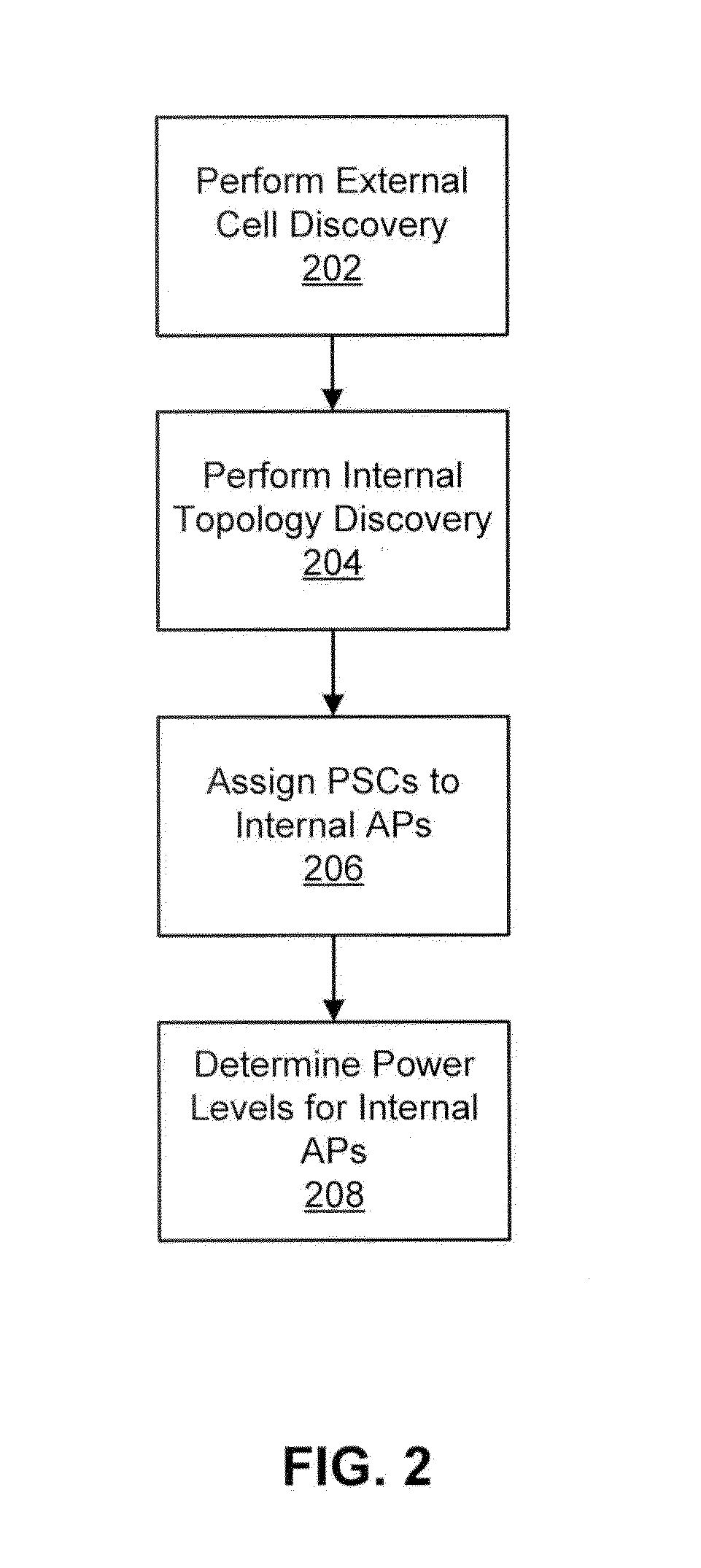Method, system and device for configuring topology of a wireless network
a wireless network and topology technology, applied in the field of wireless communication, can solve the problems of increasing the cost of the network, increasing the complexity of the network, so as to achieve the effect of reducing the interference with the external network
- Summary
- Abstract
- Description
- Claims
- Application Information
AI Technical Summary
Benefits of technology
Problems solved by technology
Method used
Image
Examples
Embodiment Construction
[0026]In the following description, for purposes of explanation and not limitation, details and descriptions are set forth in order to provide a thorough understanding of the provided embodiments. However, it will be apparent to those skilled in the art that the present invention may be practiced in other embodiments that depart from these details and descriptions.
[0027]FIG. 1 illustrates an exemplary system 100 which may be used to accommodate some or all of the disclosed embodiments. The system 100 includes a plurality of access points referenced as 101, 102, 104, 106, 108 and 112. The access points that are illustrated in FIG. 1 are connected, directly or indirectly, to an access controller 114 through connection 120. Each of the access points 101, 102, 104, 106, 108 and 112 is herein referred to as an “internal access point.” Each internal access point may communicate with a plurality of user equipment (UE), as well as other access points. It should be noted that while FIG. 1 il...
PUM
 Login to View More
Login to View More Abstract
Description
Claims
Application Information
 Login to View More
Login to View More - R&D
- Intellectual Property
- Life Sciences
- Materials
- Tech Scout
- Unparalleled Data Quality
- Higher Quality Content
- 60% Fewer Hallucinations
Browse by: Latest US Patents, China's latest patents, Technical Efficacy Thesaurus, Application Domain, Technology Topic, Popular Technical Reports.
© 2025 PatSnap. All rights reserved.Legal|Privacy policy|Modern Slavery Act Transparency Statement|Sitemap|About US| Contact US: help@patsnap.com



